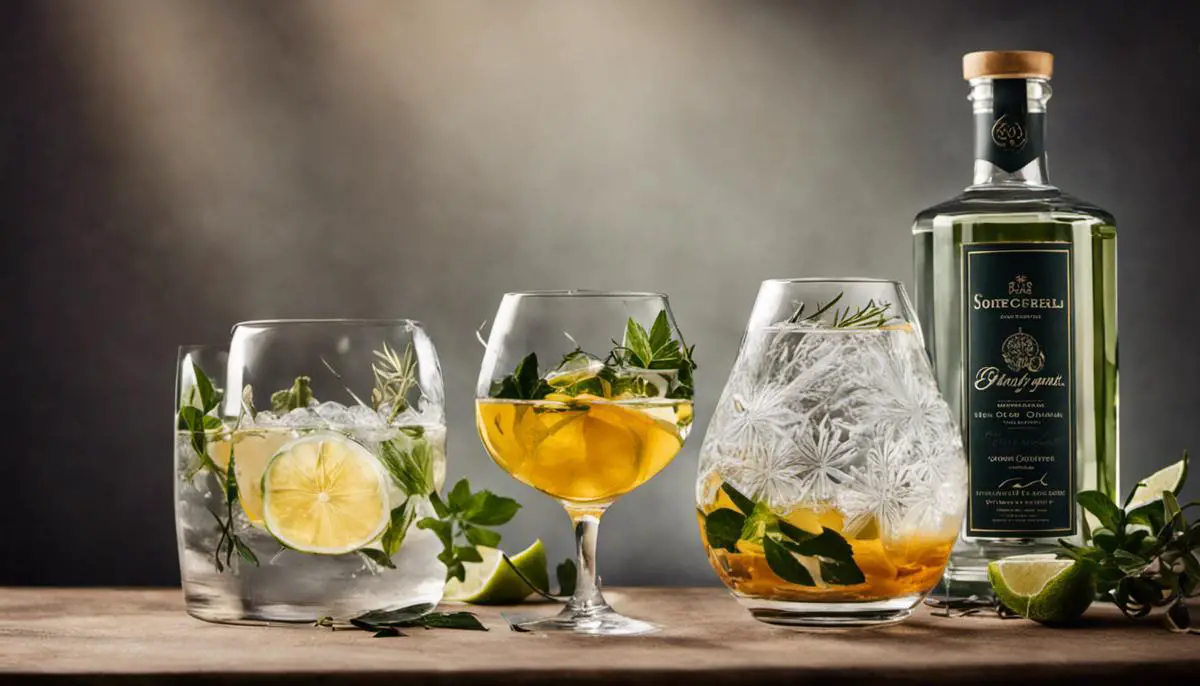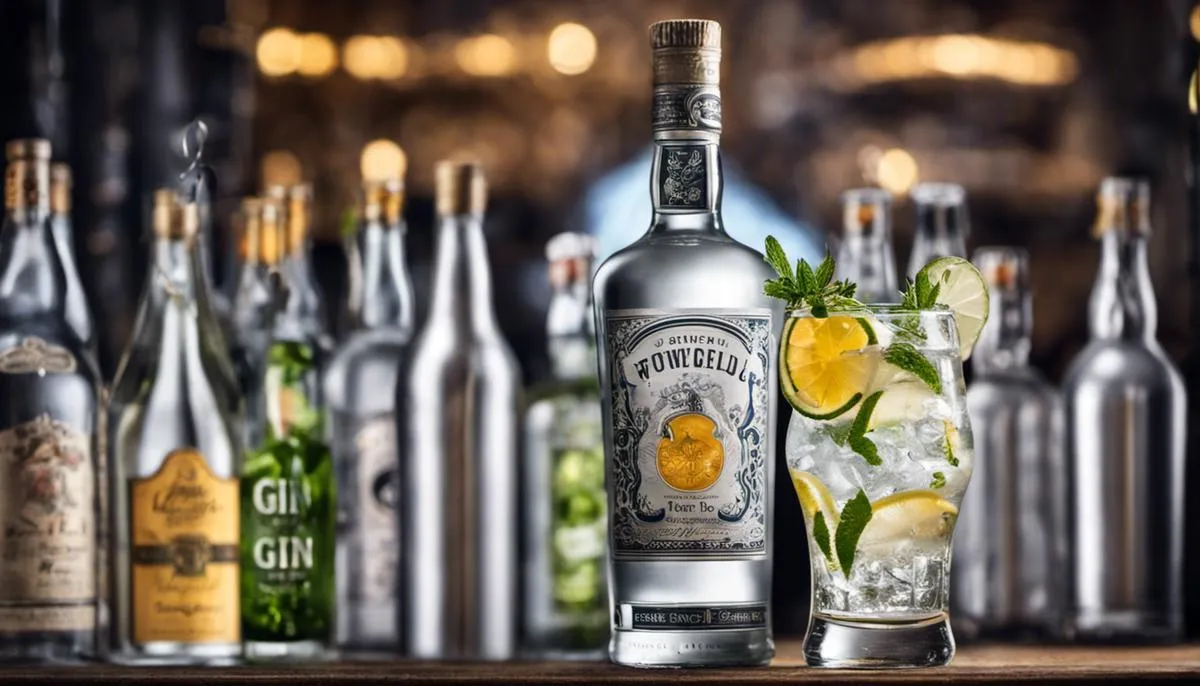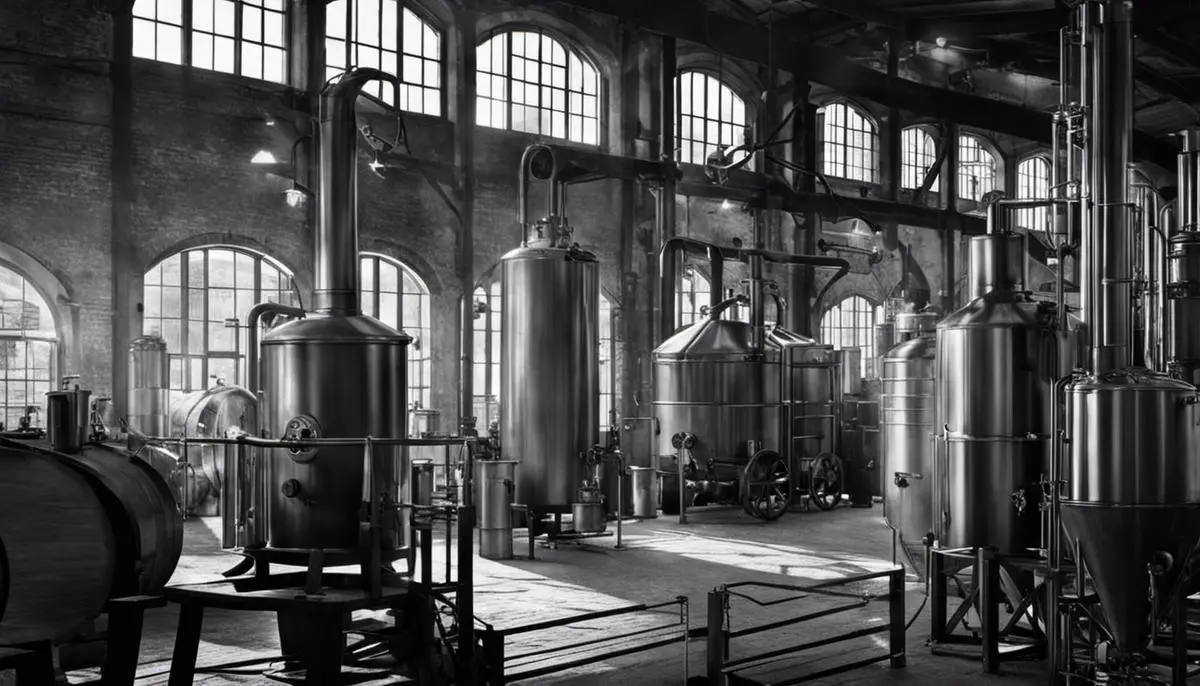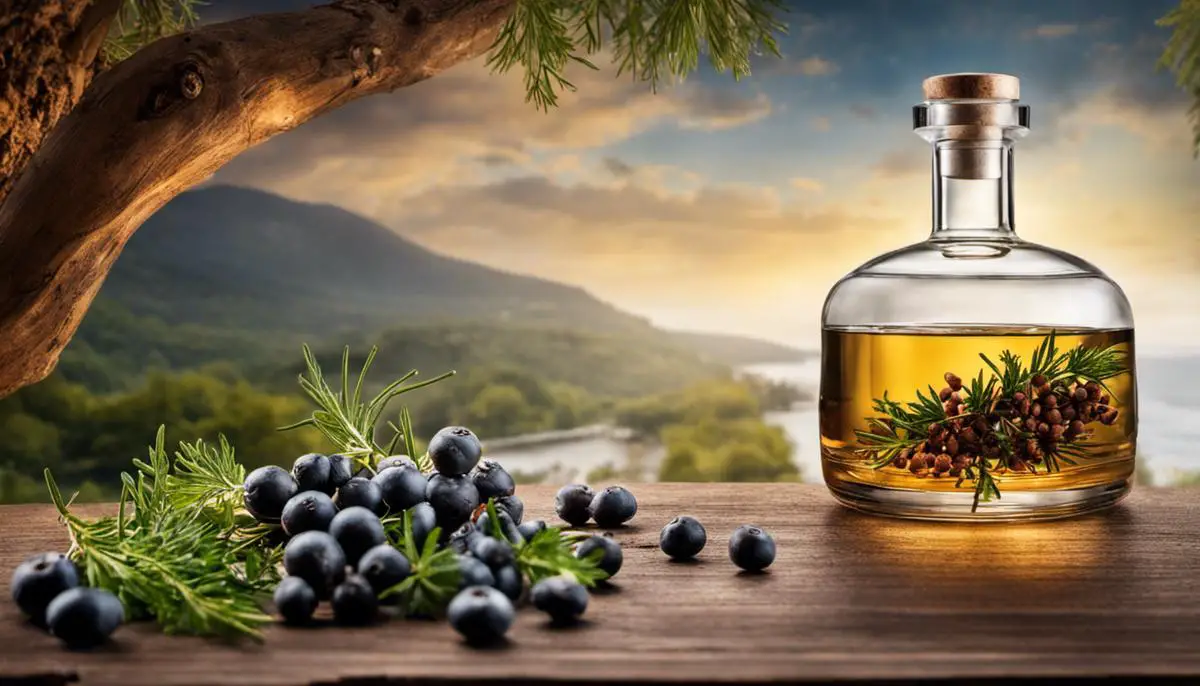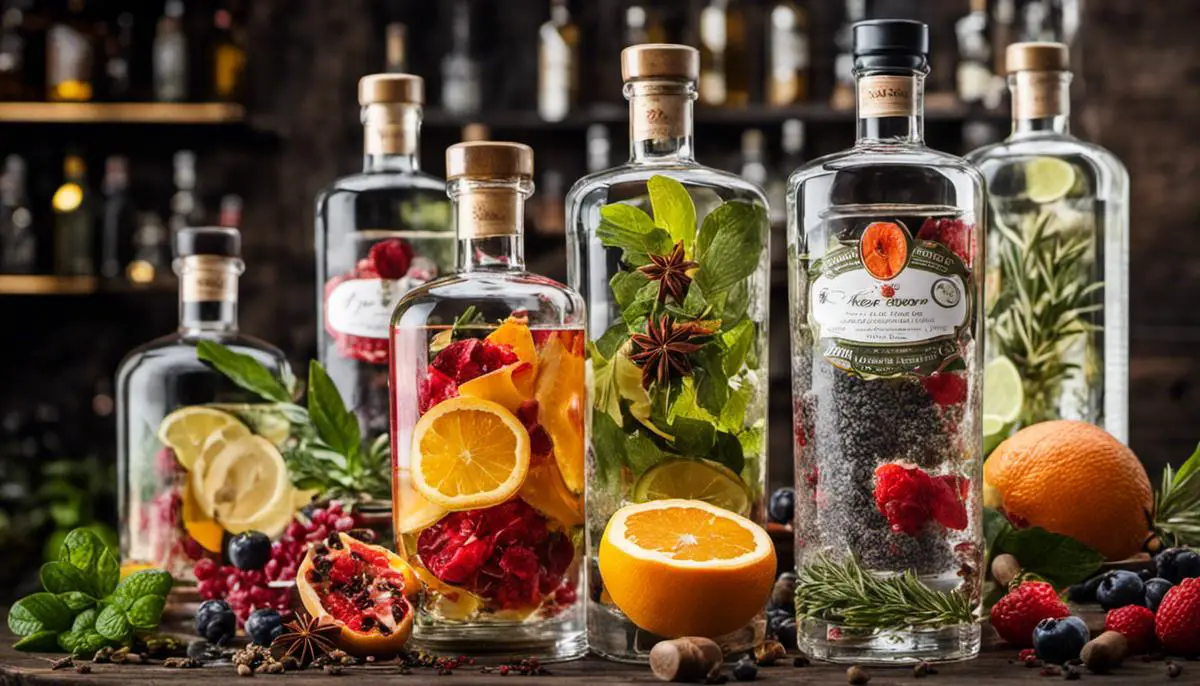Dry gin, an enduringly popular spirit that has captured the hearts and palates of many, carries a rich history and fascinating production process that many cocktail enthusiasts may not be aware of. This beverage has intricately woven its tale from its historical roots, traversing centuries and continents, to the meticulous production processes that encapsulate the harmony of science and nature. In this exploration, we unravel the world of dry gin, examining the many types, prominent brands, and the divine cocktails that it so flawlessly complements. We will also acquaint you with an insightful guide on tasting and evaluation, tailoring your understanding and appreciation of this exquisite spirit.
History of Dry Gin
Origins of Dry Gin
Dry gin, a transparent and enticingly aromatic spirit, has its roots in 17th century Holland. Originally termed ‘Genever’, this liquor was first distilled for medicinal purposes rather than leisurely consumption. Dutch apothecaries mixed distilled malt wine with a concoction of botanicals, primarily juniper berries, and conducted rudimentary distillation procedures resulting in a malty, heavy, and full-bodied spirit.
The English Twist to Gin
The English influence on gin production began during the Thirty Years’ War. The British soldiers found comfort in Genever’s calming effects during pre-battle scenarios, giving birth to the phrase ‘Dutch Courage.’ On returning home, they attempted to recreate the spirit, leading to the birth of the gin industry in England.
However, the English style was different; it was lighter, less malty, and more focused on the punchy, piney aromas of the juniper. While the Dutch style (now called Genever) remained popular in Holland and neighboring areas, the newly developed ‘dry gin’ took the rest of the world by storm.
The Birth of London Dry Gin
By the 19th Century, column stills made it possible to distill a spirit that was near-neutral in flavor, allowing the subtle flavors of juniper and other botanicals to shine through. Thus, the classic ‘London Dry Gin’ was born. Contrary to popular belief, the term does not denote the location of production but refers to the method in which this gin is made. It is characterized by a forward juniper profile, an absence of added sweeteners, and other botanical flavor profiles offering a well-rounded grace note.
Dry Gin in the 21st Century
Today, dry gin is appreciated for its flexibility and universal appeal. This distilled alcoholic drink continues to be a favorite among enthusiasts due to its unique flavor profiles ranging from robust and piney to subtle and rose-like. Whether you’re concocting a classic Martini, a refreshing G&T, or an imaginative modern cocktail, dry gin remains a timeless and versatile staple in both historic and contemporary mixology.
The Role of Dry Gin in the Spirits Industry
Dry gin holds a noteworthy position in the spirits industry, a fact demonstrated by its enduring appeal and vital role in globally recognized cocktails. Dry gin is more than just a liquor; it’s a reflection of a rich history and a tradition passed down through the ages. Simultaneously, it’s an evolving landscape, with contemporary distillers exploring the use of native botanicals and distinct distillation techniques, consequently devising a fascinating range of adaptations that continuously influence gin’s narrative.
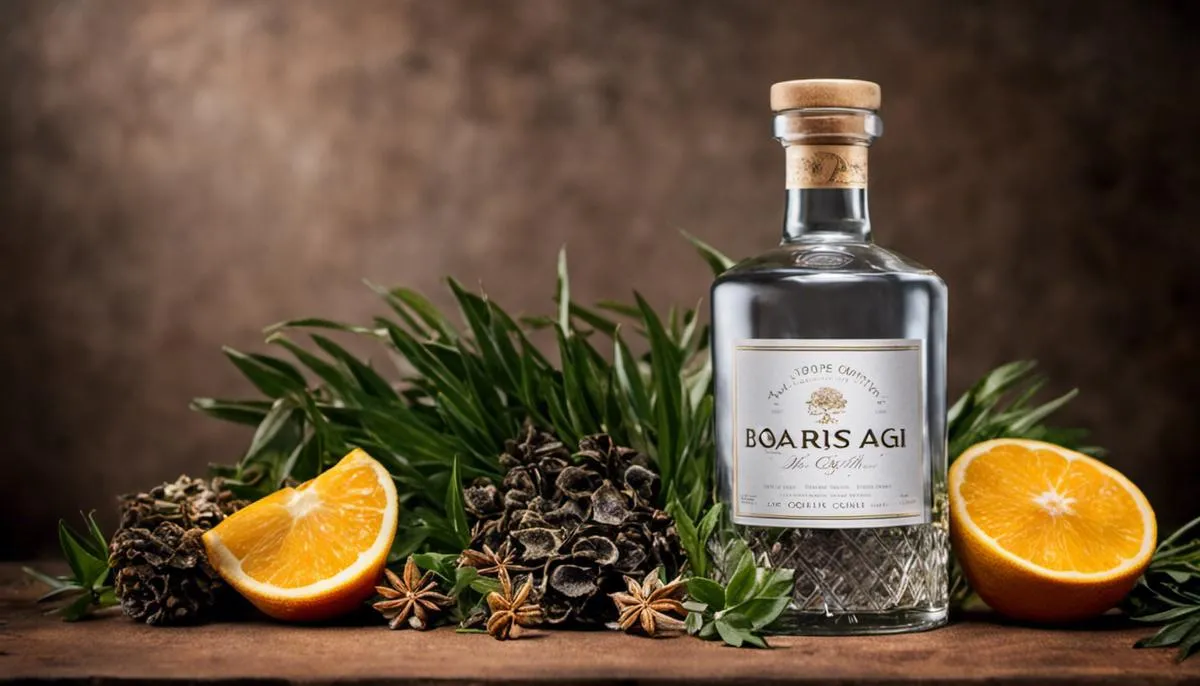
Production Process of Dry Gin
Defining Dry Gin
Dry gin refers to a specific variety of gin, principally distinguished by the flavor derived from juniper berries and its characteristic dry, sharp taste. A fundamental element in contemporary mixology, dry gin forms the foundation for numerous sought-after cocktail recipes.
Raw Materials: Botanical Selection
The gin production starts with selecting the right botanicals. While juniper is an essential herb used in all gin-making processes, various distilleries use other botanicals like coriander, angelica root, lemon peel, cardamom, and orris root for additional flavor and aroma. Each distillery has its unique blend, which gives each gin brand its signature taste.
Alcohol Selection
A neutral spirit, often made from grains such as barley, corn, wheat, or rye, is used to produce dry gin. The chosen grain is crushed, mashed and fermented to make the alcohol. The process is akin to brewing beer, but without the hops.
Distillation Process
The selected botanicals and neutral spirit are combined and steeped for a certain period before undergoing distillation. This process usually involves heating the mixture in a still until the alcohol vapors separate from the rest of the blend. These vapors then travel through a condenser and liquify once again.
Column or Pot Still?
There are two major types of stills used in gin distillation: the pot still and the column still. While a pot still typically results in a more flavorful and potent gin, a column still, also known as a continuous still, can produce a purer and smoother spirit.
Aging the Gin
Unlike whiskey and other spirits, dry gin typically doesn’t spend a lot of time aging. In fact, most dry gins can be bottled and sold immediately after distillation. However, some producers may choose to age the gin for a few months to a few years. Aged gin is usually smoother and may take on the flavors of the cask it’s stored in.
Variables that Affect the Taste
There are many variables that can influence the taste of dry gin. The type and quantity of botanicals used, the quality of the initial alcohol, and the distilling processes all play essential roles in the final flavor profile. For instance, a gin made from high-quality grains and an abundance of juniper berries will have a more nuanced taste compared to one made with low-quality alcohol and a few botanicals.
Understanding the Abv Strength
The alcohol by volume (Abv) strength of gin varies between brands. Your choice might depend on your personal preference and the type of cocktails you’re planning to make. A higher Abv gin tends to have a more robust flavor, while a lower Abv gin might be a better choice for light cocktails.
Delving into Dry Gin
When it comes to dry gin production, it’s both an intricate science and nuanced art. Every distillery brings its unique flavor to the table by employing a special recipe and process. The exciting thing about gin is its diversity that stems from these varied distillery methods. What’s more, even though gin doesn’t go through an aging period like other spirits, the process of manufacturing it is intricate, demanding a high level of skill and deep knowledge.

Types and Brands of Dry Gin
Understanding London Dry Gin
Most importantly, let’s discuss London dry gin. Contrary to what its name suggests, this gin does not necessarily hail from London. The term ‘London’ alludes to the distillation method, and thus, this gin could originate from any part of the world. Famed for its crisp, clean flavors, London dry gins are strongly anchored with a juniper base. Their compatibility with other flavors makes them an ideal choice for cocktail mixtures. Popular brands that have their name linked with London dry gin include names like Bombay Sapphire, Tanqueray, and Beefeater.
Plymouth Gin
Plymouth Gin is a unique style of gin that, unlike London Dry, is geographically designated. This means it can only be produced in Plymouth, England. Plymouth Gin is exceptionally smooth with less emphasis on juniper berries, creating a slightly sweeter flavor profile than its London dry counterparts. The Plymouth Gin Distillery, currently the only distiller of this type, has been producing it since 1793.
Old Tom Gin
Old Tom Gin is a slightly sweeter version of gin and often referred to as the missing link between the London dry gin and the sweeter Dutch Jenever. This type of gin is often used in classic gin cocktails like the Tom Collins. One of the more well-known brands of Old Tom Gin is Ransom, which is distilled in the United States.
Navy Strength Gin
Navy Strength Gin, also known as overproof gin, has a higher alcohol content than traditional gin, usually around 57%. The term “Navy Strength” comes from the British Royal Navy, as the high alcohol content meant it could potentially be mixed with gunpowder without preventing it from igniting. Brands like Plymouth and Hayman’s offer navy strength versions of their gins.
Contemporary or New Wave Gin
Contemporary or new wave gins are experimental variations of the spirit that often reduce the juniper influence and incorporate other botanicals for more complex flavor profiles. These gins have gained popularity in recent years and are produced by numerous brands worldwide, including Aviation American Gin, Monkey 47, and Hendrick’s.
Dry gin encompasses a myriad of taste profiles due to the differing types and brands available in the market. Personal preference and your intended use—be it served neat, on the rocks, or as a base for cocktails—often guide your selection. To find the perfect fit for your palate and its preferred intensity of botanical infusions, it’s ideal to try different brands.
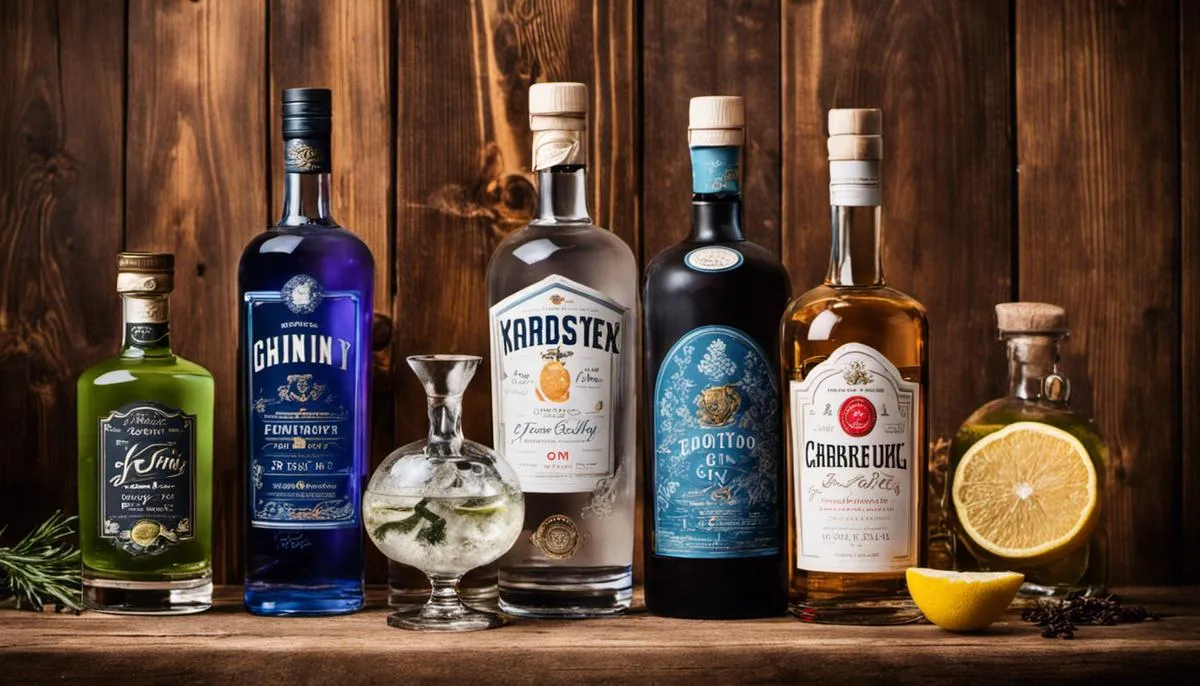
Dry Gin Cocktails and Pairings
Diving Deeper into Dry Gin
Touted as a favorite within the gin family, dry gin delights with its sharp and robust flavor profiles, which are primarily driven by juniper berries and an assortment of botanical elements. The traditional dry gin is thronged with a spectrum of flavors, encompassing spicy, herbal, citrusy, and floral undertones. This makes it an adept foundational component for cocktails. Beyond being a common sight in bars across the globe, dry gin’s unique palate allows it to form intriguing pairings with food.
Popular Dry Gin Cocktails
Dry gin is the foundation of numerous world-renowned cocktails. One of the most classic gin-based cocktails is the Martini. Combining dry gin with dry vermouth, the Martini can be garnished with a lemon twist or olive for an extra layer of flavor.
The Gin & Tonic is another timeless cocktail, known for its refreshing attributes. This simple combination of dry gin, tonic water, and a squeeze of lime or lemon is perfectly suited to a hot summer’s day.
For those who prefer a floral note, the Aviation is a perfect choice. This cocktail combines dry gin with maraschino liqueur, crème de violette, and lemon juice, resulting in a beautifully balanced, slightly sweet drink with a lovely lavender hue.
Gin Cocktails Recipes
To craft a classic Martini, mix 2 oz of dry gin with 1 oz of dry vermouth. Stir the ingredients over ice and strain into a chilled cocktail glass. Garnish with an olive or a lemon twist.
For a refreshing Gin & Tonic, fill a highball glass with ice. Add 2 oz of dry gin and top off with tonic water. Squeeze a wedge of lime or lemon into the glass and stir gently.
Mix the Aviation cocktail by adding 2 oz of dry gin, 1/2 oz of maraschino liqueur, 1/4 oz crème de violette, and 1/2 oz of fresh lemon juice into a cocktail shaker filled with ice. Shake vigorously and strain into a cocktail glass.
Perfect Food Companions for Dry Gin
Deciding the right food to pair with dry gin cocktails essentially depends on the specific botanicals present in the gin. A quintessential Gin & Tonic works wonders with food that possesses a salty or spicy kick. Consider crispy fried snacks like calamari, French fries, or even some hot and spicy chicken wings. These options beautifully accentuate the gin’s unique palate.
On the other hand, seafood, particularly raw or lightly grilled fish such as sushi or ceviche, stands as a perfect match with a refreshing Martini. The dryness and the bitter tones of the cocktail seamlessly slice through the rich, velvety texture of the seafood, resulting in a beautiful equilibrium of flavors.
For those with a sweet tooth, the floral notes of the Aviation cocktail go hand in hand with light desserts or rich, creamy cheeses. The softness of a camembert or the tanginess of a blue cheese can mirror the cocktail’s sweet and sour chord. To further, intensify the inherent sweetness of the drink, try a piece of dark chocolate.
To summarise, the plethora of choices offered by dry gin cocktails in terms of food pairing caters to an extensive gamut of taste preferences. The right pairing not only enhances the allure of dry gin but also significantly elevates your overall drinking experience.

How to Taste and Evaluate Dry Gin
The Essence of Dry Gin
Dry Gin, a spirit largely steeped in juniper, generally boasts of a lighter and heightened aromatic character when compared to other spirits. Juniper berries form the prime ingredient in the constitution of dry gin. Yet, a multitude of other botanicals make their presence counted, all of them combining to give it a unique flavor profile. Coriander seeds, angelica root, and a sundry of citrus peels are among the varied botanical elements often utilized in the distillation of dry gin.
How to Taste Dry Gin
To truly appreciate dry gin, start by pouring a small amount into a glass at room temperature. Swirl it gently to release the aromas. Look at the spirit – it should be clear without any suspended particles. The quality of a dry gin can also be identified from its ‘legs’ or ‘tears’. When you swirl the gin around the glass and then stop, you’ll see it slowly drip down the sides of the glass. If it forms slow-moving, thick tears, it’s higher in alcohol and viscosity, indicating a richer, full-bodied gin.
Next, approach the glass and take a deep inhale to identify the prominent aromas. Juniper should always be the standout scent, but you may also detect secondary notes of citrus, earthy roots, or warming spices depending on the combination of botanicals used.
Evaluating the Taste
After assessing the aroma, take a small sip of the gin. Allow it to wash over your palate and pay attention to the sensations and flavors that develop. Look for a harmony between juniper, citrus, and spice flavors, and pay attention to the smoothness of the liquid and how it feels in your mouth. Does it feel heavy or light – this indicates body. Does it make your mouth feel dry or moist after you swallow it? This sensation is referred to as astringency.
Following this initial flavor burst, consider the gin’s finish. This refers to the aftertaste and the lasting impression the spirits leaves. A quality dry gin should have a long, warming finish, with the intended flavors persisting long after consumption.
Appreciating Complexity and Balance
Just like a well-composed dish, a good dry gin is all about balance. The botanicals used should complement and enhance each other, rather than any one particular flavor dominating. Complexity can be found in a gin that offers evolving tastes and memorable experiences with every sip. A balanced and complex gin will provide an enjoyable tasting experience, whether served neat, with tonic, or in a cocktail.
Your Personal Preference
Remember, the most important factor in evaluating dry gin is personal preference. There is no right or wrong when it comes to taste. A gin that may be loved by one person might not be favored by another. The variety in botanicals used in gins make them a unique category of beverages with a wide range of profiles to explore. Developing your personal palate will involve sampling a variety of dry gins and understanding which characteristics appeal to your senses the most.
Gin tasting is an exercise in understanding and appreciating the nuances of the spirit. It’s a personal journey that involves exploring a variety of gins, understanding the interplay of flavors, and enjoying the overall experience. Whether you’re new to gin or a seasoned aficionado, remember to approach each tasting with an open mind and a focus on enjoyment.
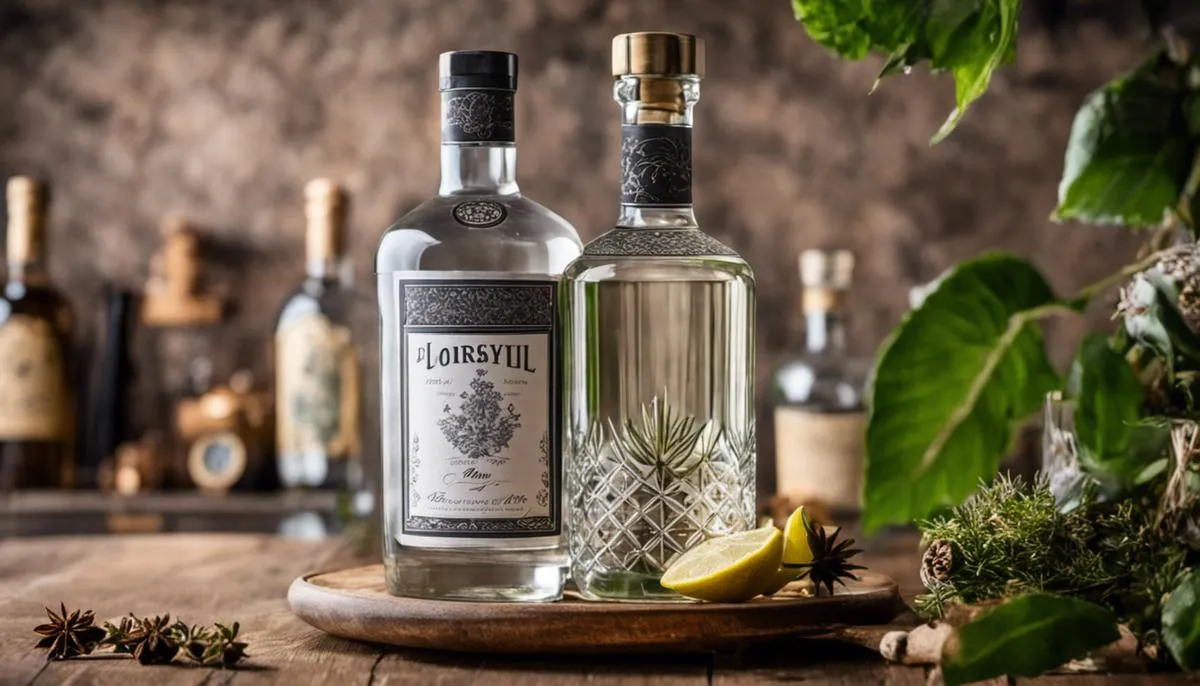
Armed with the knowledge of the history and production methods, attuned to the different types and brands available, and adept at discerning the taste nuances, your enjoyment of dry gin will have gained a new depth. This spirit, despite its dryness, is anything but plain, blossoming into a symphony of unique flavors in various cocktails and pairings. Its ability to delightfully enhance culinary experiences is diverse in its range. Embracing dry gin is not merely about sipping a drink; it’s about appreciating an age-old tradition, a deeply interesting process, and a universe of sensory experiences. So, the next time you raise a glass of your favorite dry gin cocktail, pause and savor the rich history, and mastery that it encapsulates. After all, every drop of dry gin holds a story waiting to be told, a flavor waiting to be discovered and a new experience just waiting to be discerned.

